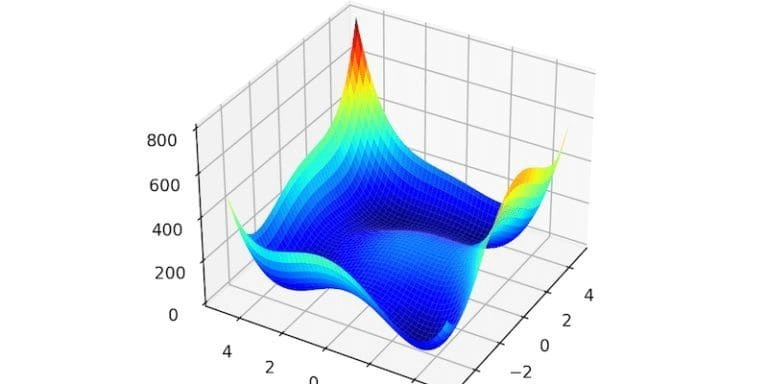Can I safely use pointers from std::vector to std::array in C++?
Introduction When working with C++, many developers often intersect the usage of std::vector and std::array, especially in performance-sensitive applications. A common question arises: can you safely use the pointer returned by std::vector::data()->data() as if it were a pointer from std::vector::data()? In this article, we'll analyze the relationship between these types and what the C++ standards say about potential aliasing issues or undefined behavior (UB). Understanding the Data Structures What is std::vector? std::vector is a sequence container that encapsulates dynamic size arrays in C++. It provides access to the underlying array using the data() member function, which returns a pointer to the first element of the array. This is helpful for performance-critical sections where you want to avoid bounds-checking. What is std::array? On the other hand, std::array is a container that encapsulates fixed-size arrays. It also provides a data() method returning a pointer to its contained data. Unlike std::vector, which has dynamic sizing, std::array has its size determined at compile time and cannot be changed. Code Example and Explanation Here’s a basic C++ code example demonstrating how to utilize pointers from both data structures: #include #include #include #include int main() { size_t const size = 10, dim = 2; std::vector vd(size); for (size_t idx = 0; idx < size; idx++) { vd[idx] = idx; } for (size_t idx = 0; idx < size; idx++) { std::cout

Introduction
When working with C++, many developers often intersect the usage of std::vector and std::array, especially in performance-sensitive applications. A common question arises: can you safely use the pointer returned by std::vector as if it were a pointer from std::vector? In this article, we'll analyze the relationship between these types and what the C++ standards say about potential aliasing issues or undefined behavior (UB).
Understanding the Data Structures
What is std::vector?
std::vector is a sequence container that encapsulates dynamic size arrays in C++. It provides access to the underlying array using the data() member function, which returns a pointer to the first element of the array. This is helpful for performance-critical sections where you want to avoid bounds-checking.
What is std::array?
On the other hand, std::array is a container that encapsulates fixed-size arrays. It also provides a data() method returning a pointer to its contained data. Unlike std::vector, which has dynamic sizing, std::array has its size determined at compile time and cannot be changed.
Code Example and Explanation
Here’s a basic C++ code example demonstrating how to utilize pointers from both data structures:
#include
#include
#include
#include
int main() {
size_t const size = 10, dim = 2;
std::vector vd(size);
for (size_t idx = 0; idx < size; idx++) { vd[idx] = idx; }
for (size_t idx = 0; idx < size; idx++) { std::cout << vd[idx] << std::endl; }
std::vector> vad(size/dim);
for (size_t idx = 0; idx < size/dim; idx++) { vad[idx][0] = dim*idx + 0; vad[idx][1] = dim*idx + 1; }
for (size_t idx = 0; idx < size/dim; idx++) { std::cout << vad[idx][0] << "-" << vad[idx][1] << std::endl; }
double *scan_vd = vd.data();
double *scan_vad = vad.data()->data();
for (size_t idx = 0; idx < size/dim; idx++) {
std::cout << *(scan_vd + dim*idx + 0) << "," << *(scan_vad + idx + 0) << std::endl;
std::cout << *(scan_vd + dim*idx + 1) << "," << *(scan_vad + idx + 1) << std::endl;
}
}
Understanding Aliasing and Storage
When calling vad.data()->data(), you get a pointer to the underlying storage of std::array. In this case, the storage of std::vector is contiguous for each individual std::array because std::array guarantees that its members are stored contiguously. This means that if you directly access the data as you would with std::vector, you can expect both to have contiguous data.
However, storing an array of arrays like std::array does not change how std::vector works inherently. You can access the array data using either method without creating potential aliasing or undefined behavior, as long as you respect the memory layout, which is indeed continuous in this case.
Important Considerations
Undefined Behavior (UB)
While the underlying arrays are contiguous, accessing the data out of bounds can lead to undefined behavior. Ensure that iterations and accesses remain within the bounds of the vector and the dimensions of the array.
Padding and Alignment
As for padding, std::array has no additional padding between the elements provided all types are aligned correctly. Typically, std::vector is allocated to ensure this alignment due to its own internal management, respecting the constraints imposed by double. Thus, while concatenated accesses as demonstrated are fast and safe under the default arrangements, do not expect padding complications in standard implementations.
Summary
To summarize: Yes, using double* scan = vad.data()->data() can be managed like how you'd use double* scan = vd.data(). Both types provide a contiguous memory layout; therefore, you significantly reduce the risk of aliasing problems or UB if you access the values recognizing their respective bounds.
Frequently Asked Questions
Can std::vector>::data()->data() produce undefined behavior?
As long as you stick within the bounds of allocated vectors and arrays, there are no UB concerns using these pointers in the context you've described.
Is the storage for std::vector guaranteed to be contiguous?
Yes, std::vector ensures that its elements are contiguous allocated in memory, which provides efficiency benefits.
Are there performance implications of using std::array within std::vector?
std::array provides benefits of fixed size and avoids dynamic allocations, hence might offer performance boosts under certain conditions where the size is known in advance.





































































































































































![[The AI Show Episode 145]: OpenAI Releases o3 and o4-mini, AI Is Causing “Quiet Layoffs,” Executive Order on Youth AI Education & GPT-4o’s Controversial Update](https://www.marketingaiinstitute.com/hubfs/ep%20145%20cover.png)





























































































































![[DEALS] Microsoft 365: 1-Year Subscription (Family/Up to 6 Users) (23% off) & Other Deals Up To 98% Off – Offers End Soon!](https://www.javacodegeeks.com/wp-content/uploads/2012/12/jcg-logo.jpg)




![From Art School Drop-out to Microsoft Engineer with Shashi Lo [Podcast #170]](https://cdn.hashnode.com/res/hashnode/image/upload/v1746203291209/439bf16b-c820-4fe8-b69e-94d80533b2df.png?#)




















![Re-designing a Git/development workflow with best practices [closed]](https://i.postimg.cc/tRvBYcrt/branching-example.jpg)




















































































(1).jpg?#)






























_Inge_Johnsson-Alamy.jpg?width=1280&auto=webp&quality=80&disable=upscale#)































































































![The Material 3 Expressive redesign of Google Clock leaks out [Gallery]](https://i0.wp.com/9to5google.com/wp-content/uploads/sites/4/2024/03/Google-Clock-v2.jpg?resize=1200%2C628&quality=82&strip=all&ssl=1)
![What Google Messages features are rolling out [May 2025]](https://i0.wp.com/9to5google.com/wp-content/uploads/sites/4/2023/12/google-messages-name-cover.png?resize=1200%2C628&quality=82&strip=all&ssl=1)














![New Apple iPad mini 7 On Sale for $399! [Lowest Price Ever]](https://www.iclarified.com/images/news/96096/96096/96096-640.jpg)
![Apple to Split iPhone Launches Across Fall and Spring in Major Shakeup [Report]](https://www.iclarified.com/images/news/97211/97211/97211-640.jpg)
![Apple to Move Camera to Top Left, Hide Face ID Under Display in iPhone 18 Pro Redesign [Report]](https://www.iclarified.com/images/news/97212/97212/97212-640.jpg)
![Apple Developing Battery Case for iPhone 17 Air Amid Battery Life Concerns [Report]](https://www.iclarified.com/images/news/97208/97208/97208-640.jpg)


































































































